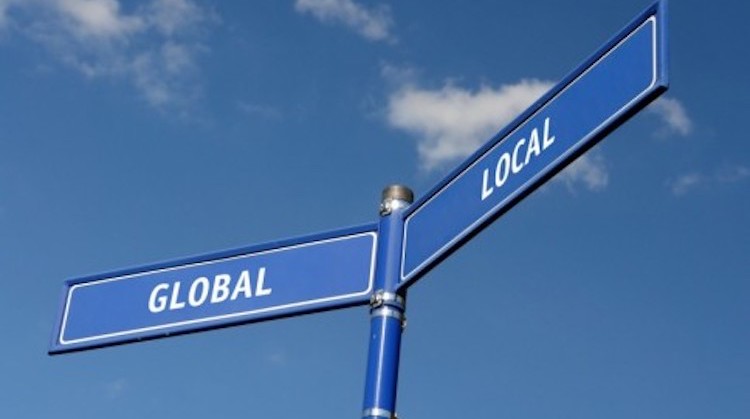After six years or so of leading marketing for media and technology companies across international markets, the answer to the question ‘What’s global’ has, at least for me, increasingly become ‘Very little.’
If you’re running any function globally, you’re always looking for things that can be processed, scaled, or otherwise made repeatable. You want the people on your teams only to have to solve problems that someone else hasn’t solved before, because it’s more efficient and means everyone can be more productive. The challenge is that efficiency is not the same as effectiveness, and giving people on the ground the power to solve problems themselves usually leads to more effective solutions. Balancing the need for efficiency with the need for effectiveness – that’s the tricky part.
Assuming we all understand that crucial differences can sometimes exist between regions within countries, let alone between countries[1], let’s first admit that even to try to develop shortcuts for better marketing ‘overseas’ is really to miss the point.
But then let’s give it a go anyway.
- The only thing that absolutely has to be the same: your brand.The list of things that should definitely remain consistent about a company across the globe goes as follows: the brand.End of list.We should be careful to remember the number of parts that add up to a brand, because it’s a lot: the company’s values; how it treats employees, partners, and customers; how all those people are expected to behave; what the company looks, feels, and sounds like. All these things play a huge part in how a company is perceived and what’s expected of it. But, thereafter, any global consistency is a compromise to manageability. They are compromises we have to make, but we should at least be clear that this is what they are.
- In a tie, defer to local.The way in which Germany does business is markedly different from the way in which France does. The nature of business relationships, the approach to gifting and business trips, expectations of pricing transparency–all these things are almost opposite to each other in these two nations. And this is before (or possibly after) we’ve dealt with things like language or that we’re talking about an entirely different set of market players and business regulations. If we sought to build a single shared marketing strategy and activity plan for both these nations we inevitably would fail in both.France and Germany share a border of about 280 miles (450 kilometres) and even a governmental organisation (the EU). Imagine then the likely success of a shared marketing strategy and activity plan for Australia and Japan (both in ‘APAC’), which are separated by more than 4,200 miles (6,800km) and do not share an alphabet.This means that where all but the red lines of corporate strategy and approach haven’t been encroached and the right path is unclear, defer to the view of the person on the ground – or closest to it. They are most likely, if not necessarily, right.
- Build strategy from common themes.In the end, a company needs a single marketing strategy—an overarching approach that allows it to plan resources (people included) effectively. If we already accept that this is a compromise to efficiency over effectiveness, we can make that strategy more effective by ensuring that it’s defined by the challenges it faces not just in its home market, nor even its biggest few, but everywhere the company operates.As a result, it is necessary to go through the process of listening to – and actually hearing – the different hurdles the business faces on the ground across the globe. Then we look for the common themes that emerge. A strategy built on those can be a rule to which there will be no exceptions – and, for consistency and manageability, that’s what we need.
- Over-communicate – and be okay with doing so.Not sure whether someone really needs to be copied in on an email or invited to a meeting? Add them. It takes a second to delete the email or reject the invite, but they may have knowledge you needed and they will certainly resent not knowing something they should. People will moan about the number of emails they get and the number of meetings they end up in, but that’s a price we have to pay for thinking and acting local in a global business environment.
- Encourage the flow of learning in all directions.It’s easy to think about how international markets can benefit from all the extra resource and learning taking place in the home market and it’s true that this path is usually the most consistently powerful. But challenges faced and solved in international markets can help the mothership, and elsewhere, too. In fact, businesses headquartered in the US often find that smaller markets hit some market shifts first and in more extreme fashion. For example, many developing countries, especially in Africa, skipped the desktop era entirely and have jumped straight to mobile, which means those markets often have stronger ideas on how we might use mobile as a marketing and ad environment. It was in Australia, for example, that the initial shift to agency trading desks hit hardest as agency holding companies used it as a test market for dumping ad networks entirely.
- Do not expect sympathy.Customers do not care about the internal challenges of managing a global marketing organisation. If you use the letter z instead of the letter s in the UK, you will be judged for it—and vice versa. Nearly 30% of countries in the world drive on the left, and they all notice when an ad features a car (not just car ads) with left-hand drive. This is not to say we still don’t have to make those compromises, just that we should not expect our customers to be okay with them.
The world is getting smaller and more of us are working across borders but crucial differences that really can determine the success or failure of our plans remain. The more we lean local the more we can figure out what those differences are and what, exactly, we should do about them. Good luck!
[1] In the Flanders region of Belgium, Dutch is the first language, not French. However, the capital city of Flanders is Brussels, which speaks mainly French and is of course the home of the European Parliament where all manner of languages will be heard and where, therefore, English is sometimes used as a shared currency. For a US reference point, consider that Belgium as a whole is about the size of Maryland.




